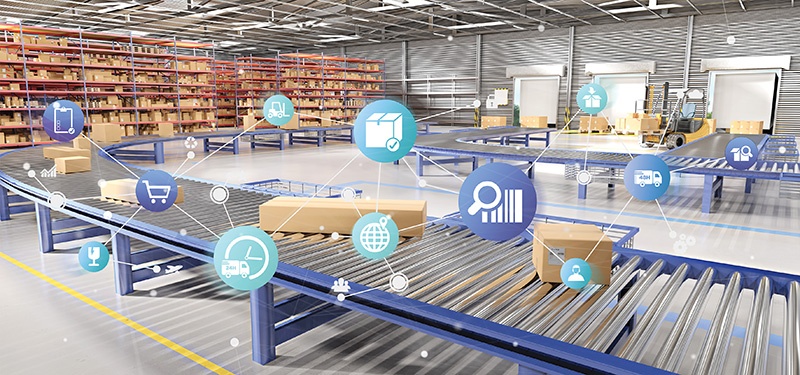Resolving to prepare for new changes
 |
| Le Khanh Lam, chairman of RSM Vietnam |
Vietnam suffered a difficult 2021 due to the pandemic, which caused strict lockdowns and hampered economic progress. July marked an unprecedented period for many manufacturers in Ho Chi Minh City with the stay-at-work operation models where staff worked, ate, and slept on site, along with work transport models in which employees stayed in dormitories or hotels, and were moved around in company vehicles to the work and back.
Unable to meet the regulations on food and accommodation for all workers in such a short time, thousands of manufacturers in Ho Chi Minh City had to close or stop operating. Most mid-range enterprises and below could just suspend production and wait for the situation to get better. The total number of enterprises withdrawing from the market in 2021 reached 119,800, an increase of 17.8 per cent, of which the majority were those established under five years ago with a small capital scale.
Employees suffer severe consequences from this. More than 1.7 million people of working age were unemployed in the third quarter, an increase of half a million compared to the previous quarter. The unemployment rate reached 3.98 per cent, the highest in a decade and far outpacing the unemployment rate during other difficult periods of the economy with 12 million people having their hours cut, and 18.9 million people lost their income.
Unprecedented challenges
As a consequence of the difficulties in manufacturing and the strict social distancing on a large scale, the supply chain was disrupted in both supply and demand directions. All wholesale markets and more than half of the traditional markets were closed, and goods from provinces could not be cleared because of disruptions in circulation. Supermarkets opened with empty shelves, and even essential items became scarce; online sales were overloaded when professional logistics and delivery entities were not allowed to operate because of pandemic prevention measures.
Disruption in production, supply chains, and purchasing power led to a serious drop of GDP growth. GDP in the third quarter of 2021 was estimated to decrease by 6.02 per cent over the same period in 2020. This was the first time since the quarterly GDP statistics in 2000 that Vietnam had recorded a quarter of negative growth.
Last October, the government moved away from its zero COVID-19 strategy to safely, flexibly, and effectively adapting to the pandemic, which allowed localities to open, especially Ho Chi Minh City and southern provinces. It marked a turning point that created opportunities to improve the country’s socioeconomic situation.
Struggling for nearly half a year with unprecedented challenges, as soon as the pandemic was initially controlled the businesses affected quickly got ready. Ho Chi Minh City and many other southern provinces started to open up, gradually recovering production activities. Interprovincial traffic resumed, orders rushed to run, and growth momentum continued to be pushed up strongly.
Particularly in the fourth quarter, GDP increased by 5.22 per cent, contributing to boosting the overall growth for the year to 2.58 per cent. Industrial production grew strongly with the index of industrial production (IIP) in the fourth quarter increasing by 6.4 per cent, contributing to the IIP growth rate to reach 4.8 per cent compared to 2020 (in 2020 it increased by 3.3 per cent). Foreign direct investment continued to recover with newly-registered capital reaching $31.15 billion, up 9.2 per cent compared to 2020.
Throughout 2021, the government issued many tax policies to support businesses and households, including on corporate income tax (CIT) expenses, tax payment extensions for VAT, CIT, and land rental, and introducing other measures to support enterprises and residents impacted by the pandemic.
 |
| Resolving to prepare for new changes |
Outlook and recommendations
Going through a difficult and volatile 2021, economic experts are still optimistic about the growth prospects of Vietnam’s economy.
Many international banks and financial institutions forecast that Vietnam’s economic growth will increase approximately 6-7 per cent in 2022. A representative of the Asian Development Bank said that the impact of the pandemic was very heavy and obvious but, so far, Vietnam’s major trading partners have been on a rapid recovery path, thereby promoting stronger trade. In particular, the high rate of vaccinations is contributing to the resumption of the economy and growth.
Taking advantage of the growth momentum from 2021 with a total turnover of $668.5 billion, the country’s import and export will continue to be the main growth motivation for Vietnam’s economy in 2022, especially when businesses could optimise the opportunities from free trade agreements.
The sectors expected to have rapid recovery will be electronics and goods related to disease prevention, such as electronics, supplies, medical equipment, machinery and equipment, furniture, textiles, footwear, and more.
However, the economic recovery process in 2022 will face many risks in this country. It is forecast that the pandemic may not end due to the unpredictable appearance of new variants such as Omicron, which could challenge the economic recovery speed in 2022.
Vietnam is also expected to be under enormous inflationary pressure. When the pandemic is under control, the production and consumption demand will rise, and inflation will be affected by the increase in prices of raw materials such as gasoline, coal, and transportation charges. Importing raw materials at high prices will influence production costs and product prices. Thereby, the prices of domestic consumer goods will be pushed up, putting more inflationary pressure on the economy.
Businesses should carefully prepare themselves to optimise the opportunities as well as deal with issues waiting ahead.
Firstly, enterprises need to accelerate their digital transformation. Fast, efficient, and personalised experiences are in high demand today, and conventional manual and paper-based procedures make it challenging to meet these objectives. Without digital transformation, whether it is cloud storage or video conferencing technologies, remote working is likewise nearly impossible. If a business is still relying on legacy methods, 2022 is the year to examine how advanced technology including AI can help reduce costs, drive efficiencies, and improve staff and customer experience.
Secondly, enterprises should re-evaluate their structure and, if necessary, devise an adjustment and restructuring strategy to adhere to the new normal. The appropriate structure is critical for maximising profit, optimising and managing tax obligations, asset protection, and having cash at the right time and in the right quantities.
Lastly, be proactive and agile. An agile business adapts swiftly to change and is not afraid to take risks in order to identify the best path forward faster. Look for measures to eliminate superfluous constraints in the organisation, such as meaningless meetings, excessive paperwork, out-of-date procedures, and unneeded bottlenecks.
Furthermore, more tax policies and regulations are expected to be issued from 2022 onwards, which will significantly alter the tax environment. Enterprises need to observe and proactively update changes of competent authorities to ensure their tax compliance.
What the stars mean:
★ Poor ★ ★ Promising ★★★ Good ★★★★ Very good ★★★★★ Exceptional
Related Contents
Latest News
More News
- Implementation of the circular economy in Vietnam (November 13, 2023 | 11:30)
- Banking’s development in data and digitalisation era (November 07, 2023 | 15:24)
- ESG enabling real estate businesses to attain funds (June 16, 2023 | 15:25)
- RSM Vietnam stays ahead of the changing business environment (March 14, 2023 | 10:07)
- What might the Vietnamese economy look like in 2023? (January 02, 2023 | 21:37)
- Neobanking: a trend-setting model for the digital revolution (December 19, 2022 | 14:30)
- Evaluating the prospects of M&A upswings next year (November 28, 2022 | 08:00)
- RSM Vietnam celebrates opening new office in Ho Chi Minh City (September 20, 2022 | 19:29)
- RSM Vietnam taking advantage of central region recovery to expand operations (September 19, 2022 | 08:00)
- Firm grasp of rules crucial in handling customer info (August 29, 2022 | 08:00)

 Tag:
Tag:






















 Mobile Version
Mobile Version